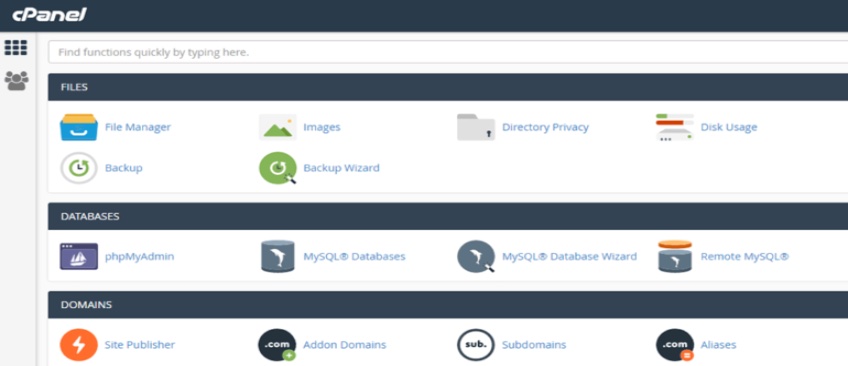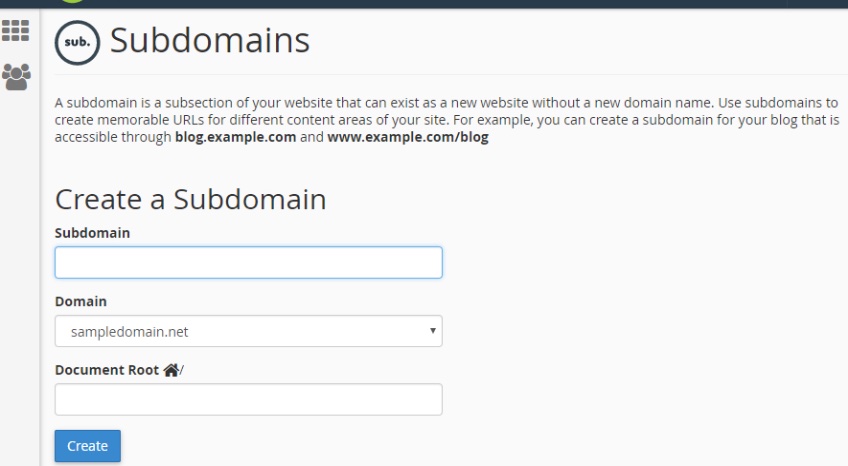Hostnames and domains are integral to the internet’s domain name system (DNS). However, subdomains have become increasingly vital for website owners to serve the growing needs of their audiences.
As a child of the parent domain, subdomains are a separate but useful part created to offer specialized features or functionality.
For instance, while the domain is your primary website, you can offer users a blog under a subdomain, just like blog.duolingo.com. And since a subdomain is an extension of a regular domain, it appears on the left side of the hostname in the URL.
Subdomains can also be used strategically by operations, marketing, and technical support to organize your website’s content into different, user-relevant sections.
For instance, nytimes.com leveraged a subdomain to establish a dedicated cooking section for its readers.

What Is a Subdomain Name?
In simple terms, a subdomain name is the title associated with sub-websites created under a website’s main domain, but let’s back up a bit.
A domain represents a website’s core, where its primary functions are centralized. A domain is equivalent to the hostname or URL we enter into a browser to reach a website, like Google (google.com) or Quick Sprout (quicksprout.com). To acquire a domain, you must register the name with a domain registrar.
When internet users go to navigate to your website, the domain name system (DNS) uses domain pointing and lookups, eventually translating the domain name into the IP address of the host server to retrieve user requests.
Alright, back to subdomains.
A subdomain is a partition that expands a domain’s functionality in an organized, accessible, and aesthetically pleasing manner. In practice, subdomains relieve you of the need to register a new domain name if you want to have a separate, yet still related site from your main one. You achieve this just by creating a subdomain under the domain you already own.
For example, consider the subdomain cloud.google.com. In this instance, cloud is the subdomain, as it appears before google.com, the primary domain.
To get more technical, a subdomain exists as a DNS record—or rather, a type of DNS record (CNAME) that adds a prefix to your domain. As such, a subdomain can be added either as an A record or a CNAME during its DNS setup. However, the latter is more common since a subdomain is typically an alias that uses the IP address of the domain.
Either way, creating a subdomain requires adding it as a CNAME or A record to your DNS zone file. This action is usually undertaken by your web host when you create a subdomain.
What subdomains allow website owners to do
While the domain is the overarching website, subdomains provide structure and organization to a site’s functionalities, allowing owners to expand their offerings and content in a coherent way.
That said, subdomains don’t only deal with content differentiation—because they also come in handy when different sections or segments of your website require different software or servers.
This allows website owners to provide localized content rather than one-size-fits-all content, which is great for websites that serve large, geographically dispersed communities. Subdomains are also ideal for big-brand restaurants that serve multiple locations.
Some other examples of subdomains and what they can be used for include:
- Blogs
- Shopping, ecommerce, and online stores
- Customer and technical support
- Internationalization
- Separate mobile sites
- Job boards
Google is an excellent example of an enterprise that is very savvy in using subdomains. The company has branched out from its original search engine foundation and now has a seemingly endless array of other services marked by subdomains, such as:
- play.google.com
- book.google.com
- maps.google.com
- support.google.com
- developers.google.com
- docs.google.com
- drive.google.com
- sites.google.com
- apis.google.com
- mail.google.com
- calendar.google.com
- translate.google.com
- earth.google.com
- fi.google.com
The difference between subdomains and subdirectories
People often conflate and confuse subdomains with subdirectories. This is because both are closely aligned yet function differently.
Subdirectories are folders within your domain’s file system that are reflected as a path in its URL. Instead of being a prefix to a domain name (like a subdomain), subdirectories are represented as a path at the end of the URL (/subdirectory-path). This provides an easy way of differentiating between the two out in the wild, because all you have to do is look at their relative positions in the URL.
Both subdomains and subdirectories share some similarities in differentiating and separating sections within your domain, but because subdirectories are folders within the server hosting the domain, they are ideal for segmenting content by topic.
For example, a subdirectory like yourdomain.com/blog/ enables you to collate all the content related to your website’s blog in one area. Because subdirectories delineate and organize content by topic, they tend to reduce confusion for users and search engine crawlers.
Meanwhile, subdomains are ideal for distribution of content that’s a bit more niche, such as tangentially related material that’s not quite relevant enough to be on your primary site. This is especially important because of the implications it can have on your keyword strategy and, ultimately, your SEO.
Unlike subdirectories, subdomains are their own separate URLs—at least according to search engines, which view subdomains as separate entities from their domains because they have content that isn’t typically associated with the main domain.
As a general rule of thumb, you can think of it this way:
- The Google algorithm treats subdirectories as part of yourdomain.com
- The Google algorithm does not treat subdomains as part of yourdomain.com
For ranking purposes, a subdomain is essentially considered to be hosted on a different domain—which means subdomains invariably create competition for your primary website. This is why it’s important, before creating a subdomain, to consider the downside of it balkanizing and detracting from your main domain’s SEO.
At the end of the day, if you desire to build better root domain authority, you should use a subdirectory strategy. This is because a subdirectory focuses keywords on a single website, and this concentration serves as a boon to its domain authority.
Why Use Subdomains?
Subdomains are used because they offer many benefits.
- Internationalization: Subdomains allow sites to target different regions, with separate sites by language. For instance, sites like Wikipedia offer en.wikipedia.org for English readers and ja.wikipedia.org for Japanese readers.
- Site performance: Your core domain may get so overloaded and expansive that user experience and performance suffer. Subdomains can break up this monolith into manageable portions.
- Distinct site SERP presence: Subdomains build their own domain authority separate from the main website. As a result, they enhance your visibility and authority by appearing alongside the main domain in SERP results.
- Branding: Because subdomains are different sections of your core site, they elevate the sections that need significantly different branding (and perhaps marketing).
- Building niche authority: By devoting attention to developing a separate interest segment, a subdomain allows you to build domain authority in a specific niche.
- Rapid indexing: While subdomains have their own domain authority, search engines can index them faster if the main domain ranks well.
- Additional resources: Subdomains provide the leeway to build other content that adds customer value—especially when the site’s content becomes too unwieldy, vast, or diverse to fit under the main domain.
- Clean organization: Subdomains provide content-heavy websites with much-needed hierarchy and reduced complexity.
How to Create a New Subdomain
Starting a subdomain largely depends on the method your hosting platform allows. However, many of the top cpanel web hosting platforms use the same general process, which serves as a decent guide.
1. Open cPanel. Its graphical interface also provides many services, such as database management.

2. Go to Domains > Subdomains. Zooming in closer, select the subdomains option under the domains panel.

3. Enter subdomain details. This involves specifying the subdomain name, its parent domain or hostname, and other relevant information. From the Document root, navigate to the folder where you want your subdomain’s files to exist.

4. Create a new DNS record. This step depends on the web hosting service you are using. Remember that a subdomain is a DNS record in your DNS zone file. Most web host services automatically create your DNS record in the background, so you don’t usually have to do so yourself. Therefore, the previous step will suffice for most users.
If not, look for the button or command that indicates affiliation with DNS records, such as Advanced DNS. Click on the Add New Record button or its equivalent. You’ll typically have the opportunity to add an A record or CNAME record at this stage.
Ensure the subdomain being created points to an IP address of the destination hostname. Otherwise, use a CNAME record if you want your subdomain to point to another domain name or alias.
Enter the relevant DNS record details like type (A record or CNAME), host (the subdomain name, for example, blog), value (IP address of the host or another domain name), TTL (time to live), and so forth, then click the submit button to create the record.
Remember, DNS propagation isn’t automatic. Therefore, you may have to wait up to 48 hours for the DNS modifications to take effect globally.
